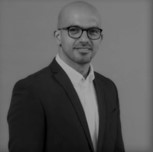Chartered Landscape Architect, Bharati Ghodke, started working at Project Centre four years ago. She immediately showed her worth and was very quickly promoted from Principal Landscape Architect to Technical Director. She has had an incredible, sometimes difficult, career journey, which shaped the way she approaches work to this day.
In 2001, her career journey was disrupted by a massive earthquake with epicentre in Gujarat, where she worked for an environmental planning company. The earthquake devastated four historic towns in India, including the walled city of Bhuj.
From planning the reconstruction of the entire walled city to the development of new sustainable road networks in the UK, Bharati is a fantastic landscape architect who’s constantly helping our clients and their communities to reach their objectives.
How did you start your career in landscape architecture?
I decided to become an architect at a young age and graduated with a bachelor’s degree in architecture from the Goa University in India. However as there were few job opportunities in Goa at that time, I moved across the country to a place called Auroville. There, I worked with an inspiring German architect who had settled in India years ago and was designing and building residential communities in Auroville.
Auroville was a haven for architects from across the world. The township plan focused on the idea of living a simplistic lifestyle, in connection with the spiritual centre and the abundant nature. This led to the exploration of sustainable design of the built environment with sustainable building materials. The architecture involved solar energy and the integration and celebration of the natural environment.
Auroville provided the perfect environment for starting my career. My experiences here inspired me to think of the wider environment, beyond just the architecture of buildings.


What was the next move?
Auroville was a great place to start, however, after four years, I felt I needed to learn more about how cities worked. And also how different components came together to create functional urban environments. I applied to the University of Stuttgart and I earned a full scholarship to do a master’s course in infrastructure planning. This was the perfect learning experience for my career. The course focused on bringing together different disciplines to work in multi-disciplinary teams. I’ve made great use of this knowledge, working for multi-disciplinary companies like Project Centre.
After completing the master’s degree course, I joined a not-for-profit planning practice called Environmental Planning Collaborative (EPC) in Gujarat, India. As an urban designer I was quickly leading on a masterplanning project in the outskirts of Ahmedabad. This involved applying a land readjustment system to convert rural land parcels for urban use in a planned manner with the required infrastructure.
Just five months into my new job, on 26th January 2001, Gujarat was hit by an earthquake measuring more than 7 on the Richter scale.
The earthquake devastated four historic towns in the Kutch district of Gujarat, destroying a million buildings, and leaving thousands of people homeless or killed. It was a real tragedy. I remember walking through the devasted streets of the historic town of Bhuj. I had shivers down my spine and I was wondering “how are we ever going to rebuild from this devastation”.

How do you even begin to reconstruct after a disaster like that?
Environmental Planning Collaborative was commission by the government of Gujarat to plan the reconstruction of the historic walled city of Bhuj. During a site visit to the historic town, it became clear to us that the reason for the high loss of life was the layout of streets and houses. These were narrow, winding streets and housing clusters with singular entry points marked by gatehouses. With collapsed gatehouses blocking entries, rescue teams could not get to trapped residents quickly.
Looking at an early post-earthquake survey plan and comparing it to a historic plan of the walled city, I thought we could have avoided some of the disastrous impact of the earthquake. I started joining up some of the key street sections to try and create a legible and hierarchical street network. This would enable emergency access and clear escape routes should an earthquake occur again.
To gain the additional land that would be required for a connected and widened street network, I considered applying the town planning system that was used in Gujarat to convert rural land to urban use. For example, taking a small percentage of each plot to provide for the road network.

career
The Managing Director of EPC approved the approach and proposed it to the local government. The planning authorities gave us the go-ahead, and I was in charge of taking forward the masterplanning process. We had a team of eight architects and several young local college graduates to support on data collation and residents outreach programme.
There must have been a difficult project to work on…
The entire process was complex, and it took a strong community participation approach to ensure the residents understood the process. We wanted them to remain part of it from start to finish. I had to often present plans to large community groups in a language that I was not very fluent in. But the community received me with an incredible sense of participation, which really showed their willingness to get back to normal after the devastation. We also maintained an open door policy at our site office. This enabled local residents to come in at any time to look at the plans and individual sites in detail.
The reconstruction process took time. And it was an intense couple of years working long hours and living in frugal conditions. But I’m extremely proud of what we at EPC achieved and the support we provided through our work. We provided a new home to so many people impacted by the earthquake.
Why did you decide to move to the UK? And did you find any challenges here?
After the intense pressure of the earthquake project, I really needed a break and a complete change of scene. So I decided to go back to studying. I came to London as my partner was living here, and enrolled for the master’s course Cities, Design and Regeneration at the London Metropolitan University.
Upon completing the master’s degree course, I joined Burns + Nice (B+N), a landscape and urban design practice based in Farringdon. I worked as an Urban Designer and Project Manager for a TfL commission. I stayed with B+N for 13 years, working on public realm projects and strategies for clients such as TfL, Crossrail, City of London and various local authorities. The projects were complex and challenging but thoroughly fulfilling. We were improving the environment for all users and addressing issues such as accessibility, air quality, climate change impacts and so on.
In 2018, when Burns + Nice closed, I joined Project Centre where I get to work with fantastic professionals. I have grown my career from Principal to Associate Director of the Landscape and Urban Design team.
You’ve had such an incredible career journey. But if you could change anything, what would it be? And what advice would you give to young individuals that are willing to start their career in architecture?
By all means, landscape architecture is a challenging job. From the detailed requests of local governments to the communities’ needs, it’s hard to please everyone and deliver all projects on time. But I wouldn’t change any part of it. My advice to young professionals is to not be scared and just take whatever challenge comes your way. Any challenge is an opportunity to grow.
Also, in addition to university qualifications, it is important to keep learning and to take on charterships and professional qualifications. That is not only important for your job title, but also to develop your professional knowledge. It can help you find new ways to address the issues we face such as the impacts of climate change.
Project Centre offers partnerships and sponsorships with some of the most important professional organisations. I’m really impressed with how the leadership here encourages you to grow. So, if you have the time and the opportunity to do so, don’t miss out on that and keep on demonstrating how keen you are to progress in your career and expand your industry knowledge.


